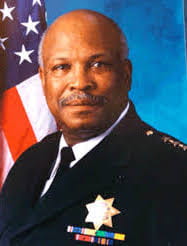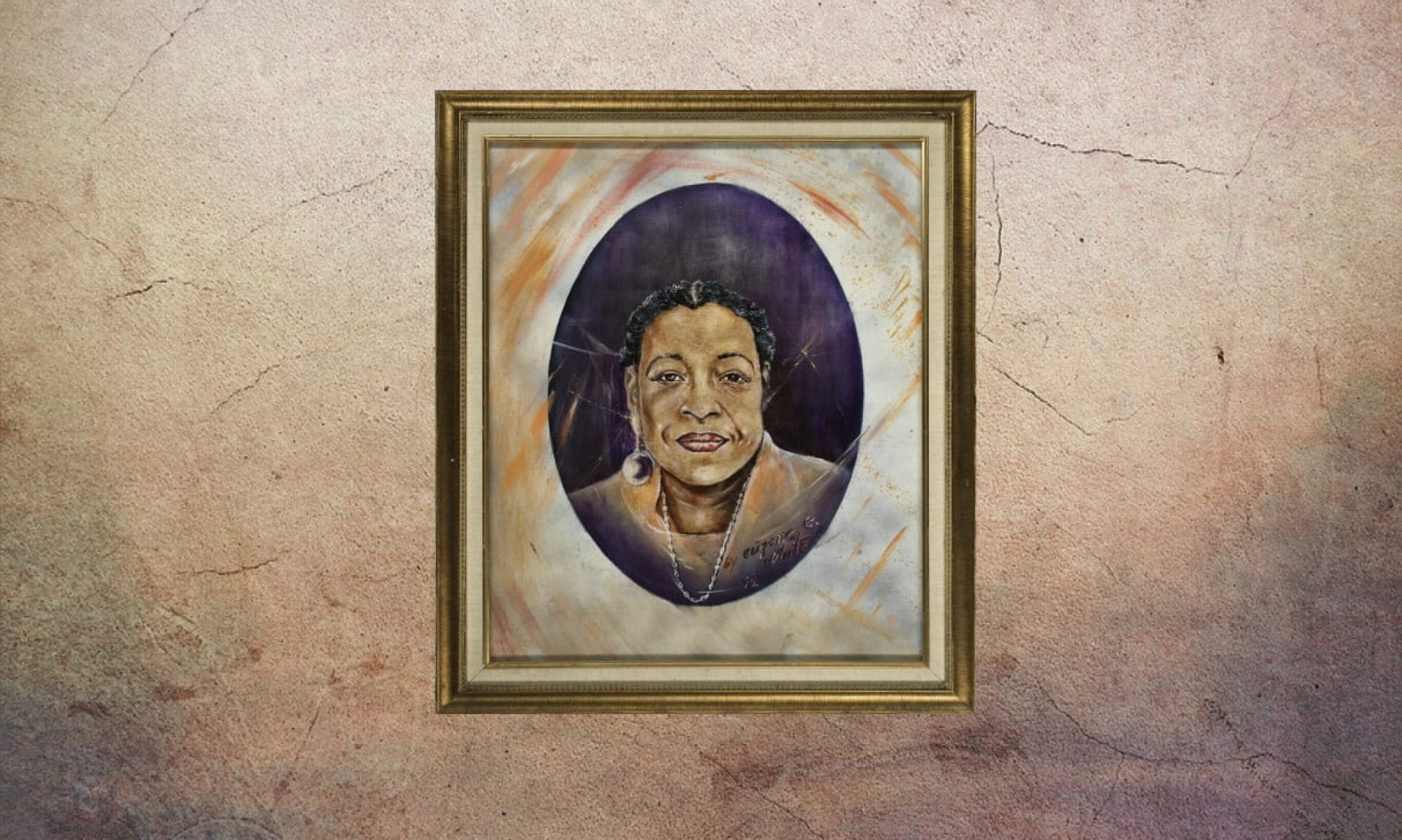
Former San Francisco Police Chief Prentice Earl Sanders was a prominent influencer in the San Francisco Police Department’s homicide department for decades before being named chief by Mayor Willie L. Brown in 2002. Numerous accomplishments, including his role in promoting the civil rights work for San Francisco’s Officers for Justice, earned Sanders a place on the Inspiration murals at the Ella Hill Hutch Community Center in the Western Addition.
Sanders was born in Nacogdoches, Texas, in 1937. (His birth certificate read “Prettiest Earl Sanders,” which he changed to “Prentice” when he started elementary school.) When he was five, his mother moved to Houston, marrying William Lacy. Sanders attended segregated schools in Houston before his family moved, under tense circumstances, to Los Angeles, where Sanders’ mother thought schools would likely be better. Earl’s upbringing in Los Angeles, however, was also challenging, and after his mother died when he was 14, Sanders ran away to San Francisco to escape his step-father, and to make his own way. Sanders enrolled at Washington High School, living for a time at a nearby boarding house, earning high grades, even as he worked in the evenings. He was a member of the Washington High School Eagle Society. Before graduating high school he moved into an apartment in the Fillmore district, at the invitation of the family of Kelly Waterfield, with whom he remained lifelong friends.
After graduating high school Sanders attended City College of San Francisco, where he earned his associate’s degree. In the late 1950s, after his stipend from the Kappa Alpha Psi fraternity had run out, he joined the Army National Guard. Before he turned 21, he had already joined the US Army Officers Candidate School (OCS) in Fort Benning, Georgia, where he would go on to graduate first in his OCS class. The virulent racism of the time meant he could not regularly leave the base, so he studied, eventually returning to California as a Second Lieutenant. Sanders remained in the California National Guard into the 1970s, ultimately retiring with the rank of Captain.
Sanders’ drive for education was lifelong. In the 1970s, even while rising through the ranks in the police department, he attended Golden Gate University, ultimately earning his undergraduate degree and his master’s degree in public administration, summa cum laude. Later still, Sanders’ quest for education earned him a place as a Coro Foundation Fellow, and he received an executive certificate in public policy from the Harvard Kennedy School.
Long before he was appointed Chief in 2002, Earl Sanders was a respected detective in the San Francisco Police Department.
In 1964, Sanders joined the police department after being honorably discharged from the Army, and serving for a time in the Social Security Administration. He faced many hurdles as an African American in the police department (particularly galling was the temporary thwarting of his career through medical tests intended to deny him a place in the SFPD, which Sanders fought and won). In response to an unwelcoming environment, he joined the Officers for Justice, which was a cohort of officers who worked to address the prejudicial nature of promotions within the police system. (Sanders later served as president of Officers for Justice.) This group filed a class action discrimination suit against the SFPD in 1973, and Sanders was among the first to testify about the indignities he braved at the department. After significant legal battles, the use of unfair testing was finally officially overturned, and Sanders and his team helped to cement the consent decree that “became a model for every police department across the nation, forever changing the face of policing in America” (Sanders and Cohen 266).
Over the course of the next few years, Sanders was promoted to inspector, specializing in homicides. Sanders worked on some of San Francisco’s best known cases alongside his partner Rotea Gilford. Most notable was their role in solving the “Zebra murders,” where more than a dozen white San Franciscans were killed. Sanders co-authored a very compelling book entitled The Zebra Murders: A Season of Killing, Racial Madness and Civil Rights, detailing the very stressful conditions he faced. The department expected Sanders, Gilford, and others to use their “black status” as advantages in the investigation, but clarified that there would be no backup from white officers. As one book overview put it, “In those impossible conditions—the oppressive white power structure on one hand, the violent black radicals on the other—Sanders and Gilford” faced tremendous challenges, which they handled with strength and equanimity, as they eventually brought the murderers to justice.
Sanders continued to rise through the ranks at SFPD. In 1995 Mayor Willie L. Brown appointed him as second in command at SFPD. Eventually Sanders was appointed Chief on July 4, 2002. Sanders is now enjoying his retirement with his family, with his place in the history of San Francisco Police Department, more than assured.
— Olivia Walker and members of the Martín-Baró Scholars Program
Works Cited
Herron Zamora, Jim, and Ilene Lelchuk. “Earl Sanders—New Chief PA.” SF Chronicle. 12 Jul 2002.
Mandel, Bill. “Faces Behind the Long Arm of the Law.” SF Examiner. 22 May 1994.
Sanders, Marcus. Personal communication. Jan 2020.
Sanders, Prentice Earl, and Bennett Cohen. The Zebra Murders: A Season of Killing, Racial Madness, and Civil Rights. Arcade: New York. 2006.
